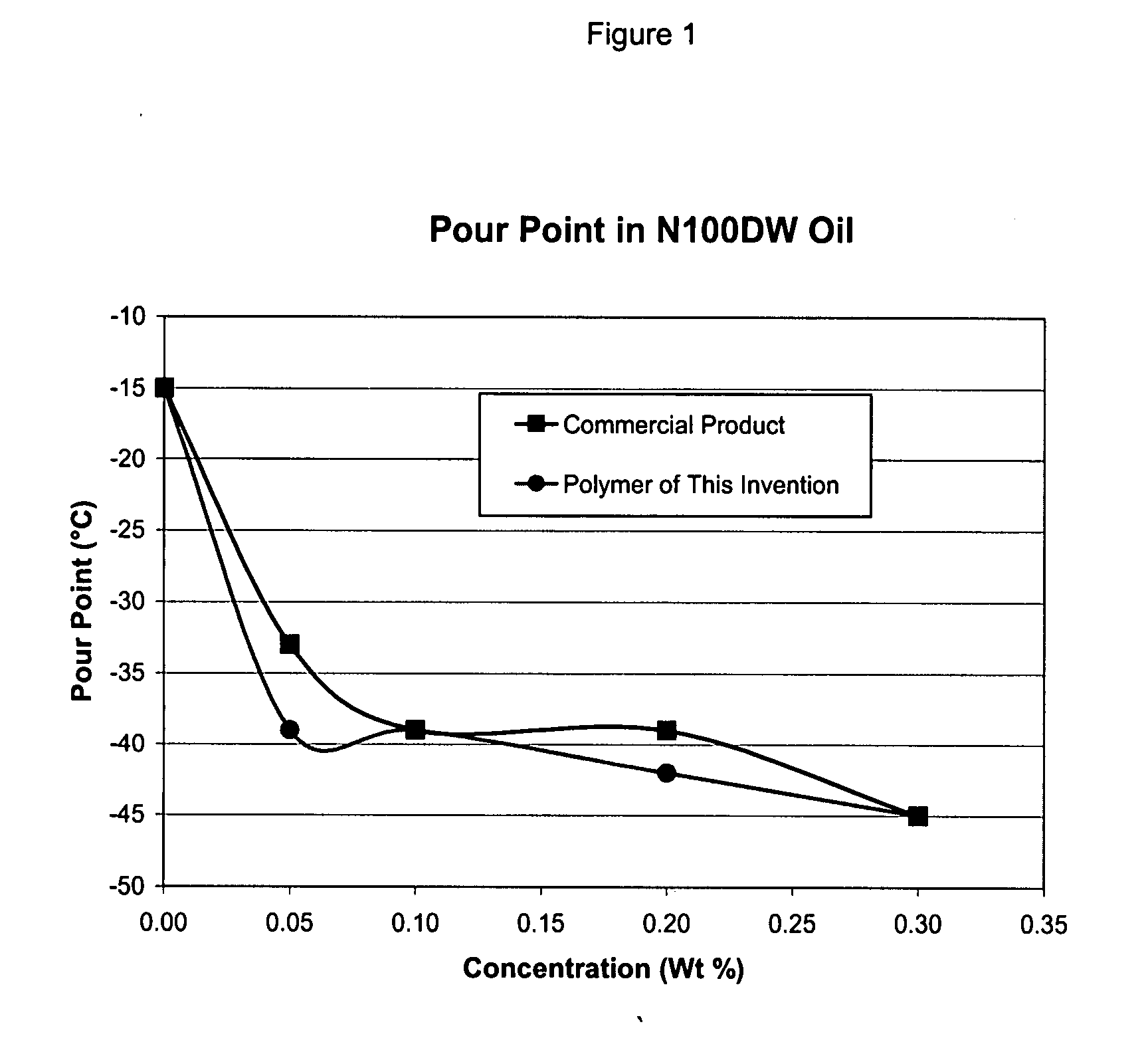Methacrylate copolymer pour point depressants
a technology of methacrylate and copolymer, which is applied in the petroleum industry, lubricant compositions, etc., can solve the problem that the patent does not teach copolymers containing specific monomers in specific proportions, and achieve the effect of improving the low temperature properties of lubricating oil
- Summary
- Abstract
- Description
- Claims
- Application Information
AI Technical Summary
Benefits of technology
Problems solved by technology
Method used
Image
Examples
example 1
Synthesis of Lauryl-Behenyl Methacrylate Copolymer-90 / 10 Monomer Weight Ratio
[0122] 140 g of high temperature oil (neutral hydrotreated oil) is charged to a reactor and heated to 95° C. under nitrogen. T-butyl peroctoate, 0.406 g in 7.7 g of oil is added to the heated oil in the reactor. Two separate parallel feeds are setup for metering into the reactor. The first feed is made up of a mixture of 252.00 g of lauryl methacrylates, 28 grams of behenyl methacrylate, 1.12 grams of dodecyl mercaptan (DDM) and 235.20 grams of high temperature oil and is metered over a 2 hour period. The second feed consists of 1.22 g t-butyl peroctoate in 23.14 g of oil and is fed over a 3 hour period. Both first and second feeds are started simultaneously. At the end of 2 hours of feed, the second feed rate of the initiator is doubled. The reaction is held for an additional hour at 95° C. after which an additional charge of initiator, 0.560 g in 10.64 g oil is added to the reaction and held for one more...
example 2
Synthesis of Lauryl / “C30” Methacrylate Copolymer-90 / 10 Monomer Weight Ratio
[0126] 100 g of high temperature oil (neutral hydrotreated oil) is charged to a reactor and heated to 95° C. under nitrogen. T-butyl peroctoate, 0.213 g in 4.05 g of oil is added to the heated oil in the reactor. Two separate parallel feeds are setup for metering into the reactor. The first feed is made up of a mixture of 180.1 g of lauryl methacrylates, 31.48 grams of “C30” methacrylate, 1.46 grams of dodecyl mercaptan (DDM) and 175.80 grams of high temperature oil and is metered over a 2 hour period. The first feed is also stirred and gently heated because the C30 methacrylate is not completely soluble in the base oil at room temperature. The second feed consists of 0.64 g t-butyl peroctoate in 12.14 g of oil and is fed over a 3 hour period. The first and second feeds are started simultaneously. At the end of 2 hours, the second feed rate of the initiator is doubled. The reaction is held for an additional ...
PUM
| Property | Measurement | Unit |
|---|---|---|
| Percent by mass | aaaaa | aaaaa |
| Percent by mass | aaaaa | aaaaa |
| Percent by mass | aaaaa | aaaaa |
Abstract
Description
Claims
Application Information
 Login to View More
Login to View More - R&D
- Intellectual Property
- Life Sciences
- Materials
- Tech Scout
- Unparalleled Data Quality
- Higher Quality Content
- 60% Fewer Hallucinations
Browse by: Latest US Patents, China's latest patents, Technical Efficacy Thesaurus, Application Domain, Technology Topic, Popular Technical Reports.
© 2025 PatSnap. All rights reserved.Legal|Privacy policy|Modern Slavery Act Transparency Statement|Sitemap|About US| Contact US: help@patsnap.com

